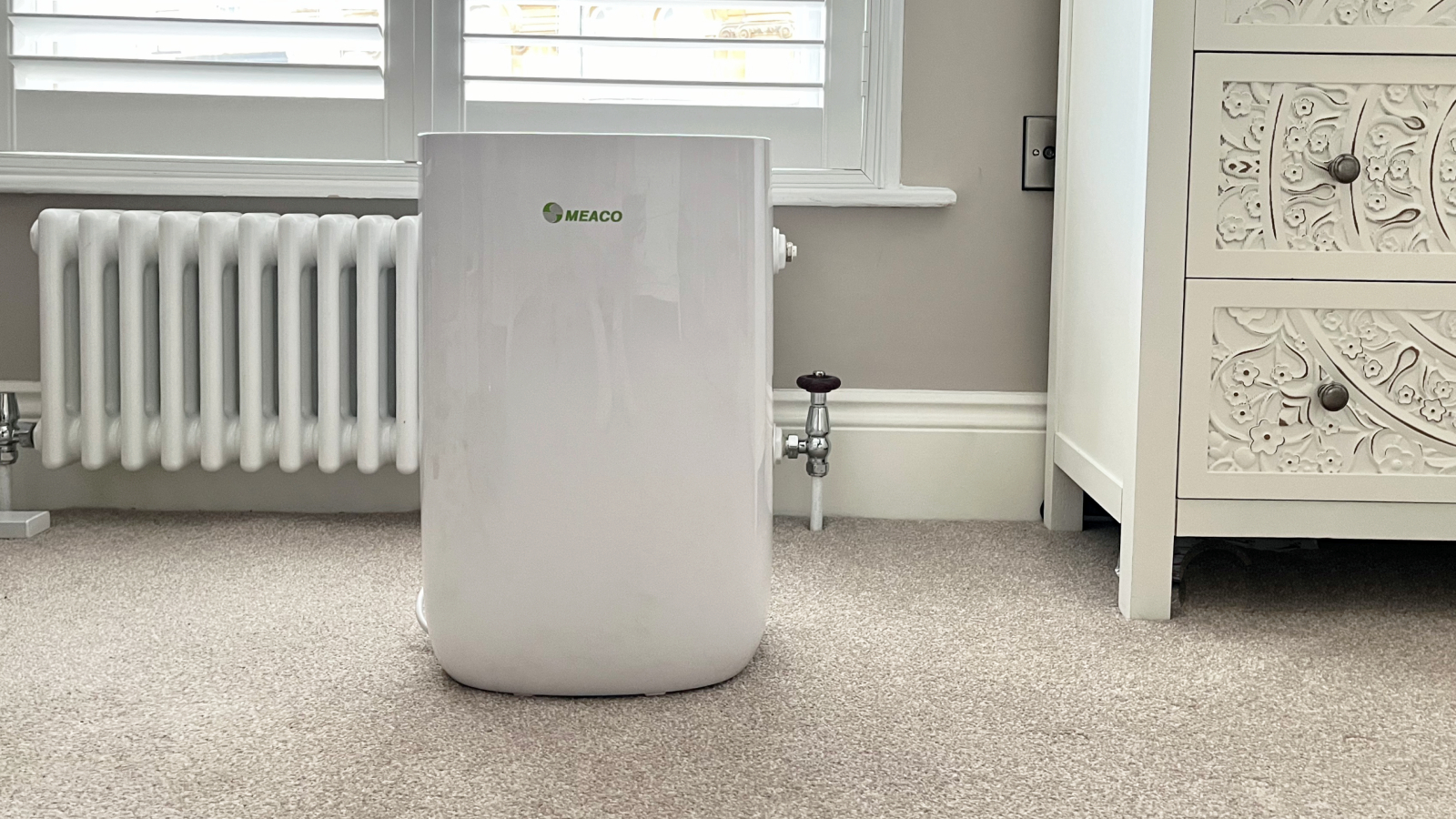Homebuilding Verdict
Despite having some reservations about being able to sleep while a dehumidifier worked, I'm pleased to say not only did I sleep, but I also woke to condensation free windows. It's now on offer in Black Friday deals and I would definitely invest in one.
Pros
- +
Low noise level
- +
Clean design
- +
Ease of use
- +
Sleep function
- +
Humidity display
Cons
- -
Noise at start-up
- -
Single handle at back
You can trust Homebuilding & Renovating.
As a light sleeper, I was a little sceptical that I would sleep through a dehumidifier working all night in my bedroom. But, with single glazing meaning I also have a big problem with window condensation, I'm also aware it's not healthy to sleep in an environment that is creating mould on my window frames.
While most dehumidifiers operate at a fairly low decibel level, I chose to test one that is certified by the Quiet Mark association as I hoped that would give me the lowest noise option available. In addition, the MeacoDry ABC 12L dehumidifier has a sleep setting and I was keen to see what additional benefits this offered over simply choosing a lower fan setting.
And of course, I was also keen to see just how much moisture it would remove from my room each night while I slept. Would it make a noticeable difference or would I still need to use a window vacuum to removing any remaining condensation?
Initial impressions
There's little point trying to wax lyrical about the aesthetics of dehumidifiers as ultimately they are practical products designed to serve a purpose. As they are unlikely ever to win style awards, the less unobtrusive they are the better, and the MeacoDry ABC 12L Dehumidifier answers the brief well.
It arrived clearly packaged and wasn't heavy to carry. I live in a flat which is accessed via a flight of stairs, with another to my bedroom, so given it's identified on the Meaco website as suitable for flats, it was good to see it was easily transportable if you didn't live on the ground floor.
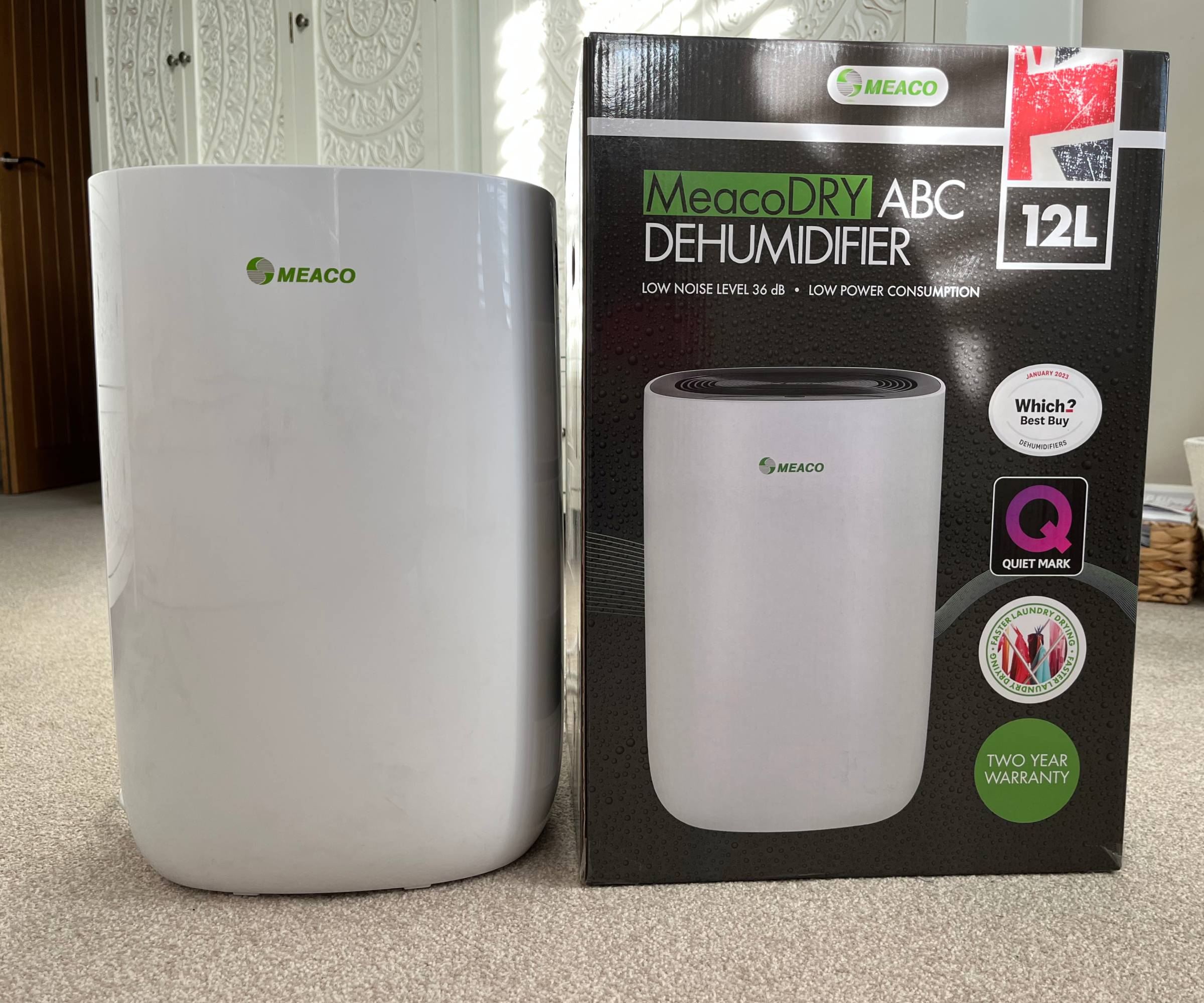
In terms of appearance, the image on the box shows it to have a fairly standard white exterior, a simple Meaco logo on the front and a black top with clearly defined buttons and an LCD display.
The white plug and cable I found on opening the dehumidifier was also pleasing as white always feels easier to blend with an interior. Although I did question the need for a see through section on the water container on the rear of the dehumidifier. It seemed somewhat pointless given it couldn't be viewed from the front and has an auto-off function when the water tank is full. My only other initial concern was with the single in-built carrying handle. While unobtrusive, it felt unbalanced when carrying it as it naturally tilts forward.
Bring your dream home to life with expert advice, how to guides and design inspiration. Sign up for our newsletter and get two free tickets to a Homebuilding & Renovating Show near you.
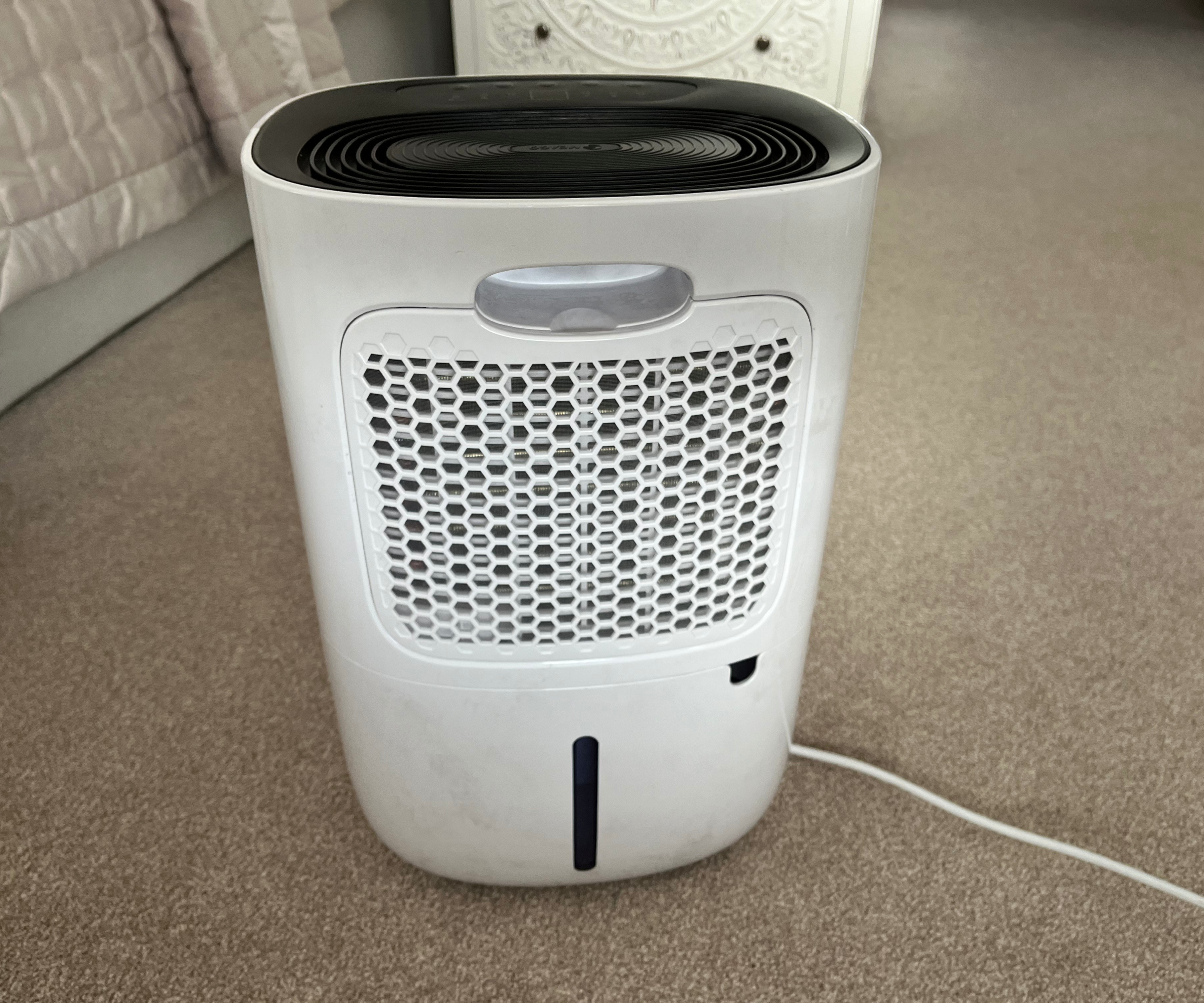
MeacoDry ABC 12L dehumidifier specifications
The MeacoDry ABC 12L dehumidifier may be a smaller model, than others with larger extraction power such as the ProBreeze 20L dehumidifier, but still comes with an impressive list of features.
- Dimensions: H 463mm x W 300mm x D 250mm
- Weight: 10.4kg
- Moisture removal: Up to 12L / day
- Type: Compressor
- Noise level: 36 dB and Quiet Mark certified
- Water tank capacity: 2.6 L
- Recommended room size: Flats or 1-3 bedroomed houses
- Drainage: Tank or continuous but hose not included
- Filters: Washable dust filter
- Extras: Sleep mode, child lock, laundry mode, timer, automatic defrost, auto-off
How I used the MeacoDry ABC 12L dehumidifier
Based on the 'easy as ABC' principle, I wondered if setting up the MeacoDry ABC 12L dehumidifier would be simple. It's recommended you leave it stand for 6 hours before the first use, and if using in a bedroom, Meaco recommend not placing it at the end of the bed, just in case it gets obstructed by bedding or bed furniture.
As I didn't set it up early enough, I wasn't able to test the dehumidifier overnight on the first use. However, even though I'd missed the perfect opportunity to use it on a cold night, it did mean when I woke up my windows were covered in condensation and I could put it to immediate use.
Unpacking the item was easy and a printed instruction manual is included which is uncomplicated and easy to follow. Each part is clearly identified in the manual along with a full breakdown of how each button works. As the filter is already in place (but removable for dehumidifier maintenance and cleaning), it simply is a case of waiting 6 hours and then switching it on.
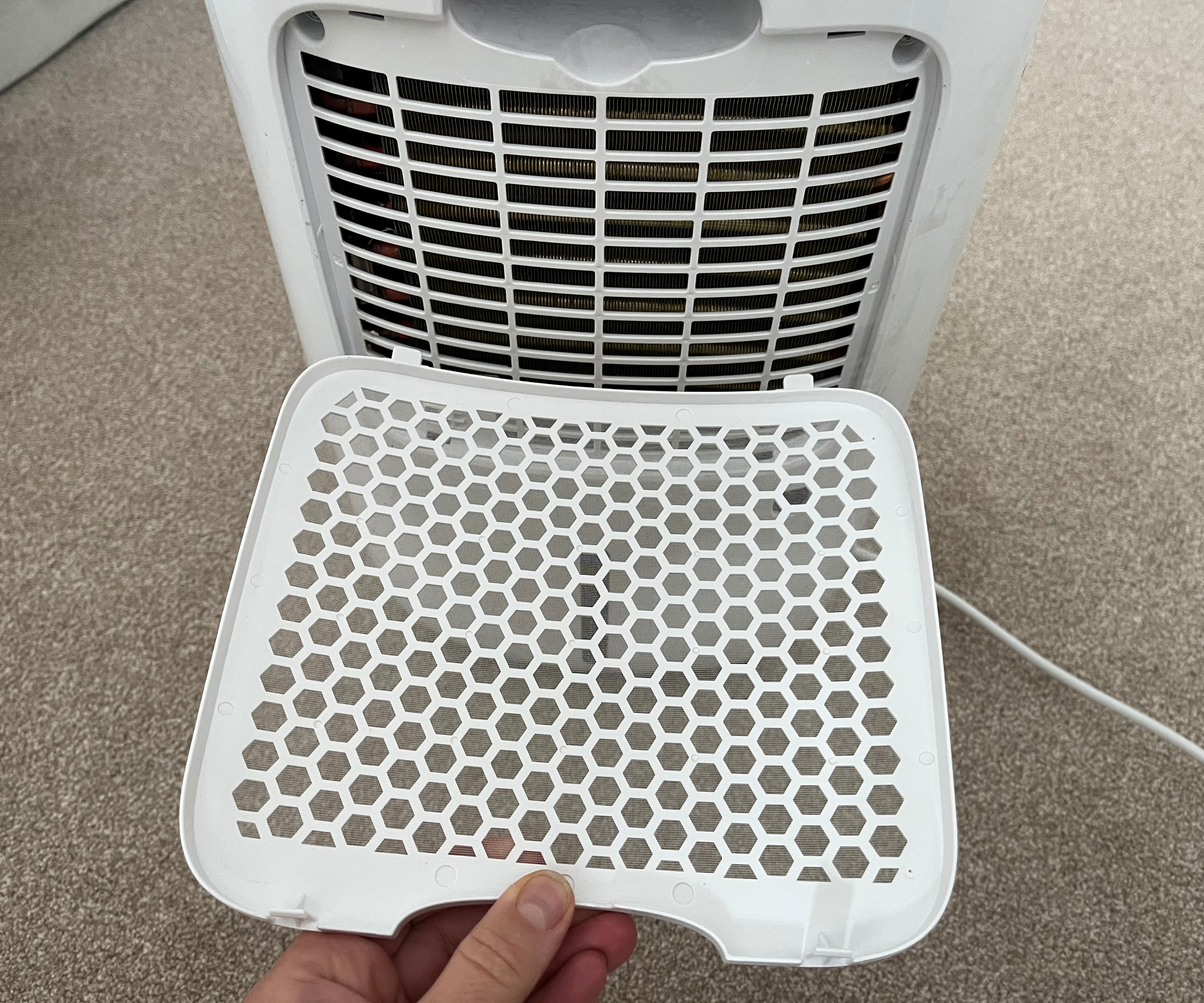
Setting humidity levels
The unit offers two ways of reducing humidity. First is a continuously on (CO)mode which means it will continue extracting moisture until you switch it off. If using the unit to dry laundry, the CO mode is recommended. The second option is to choose a desired humidity level and once you've reached that level, the unit will auto switch-off, testing the air every 30 minutes after that point and starting again if required.
As I'd not used a dehumidifier in my bedroom for some time, I opted for the higher fan setting and CO mode until the windows were cleared. Since that first use, I've also tested it during the day using the humidity setting which is simply activated by pressing the humidity button to rise in increments of 5% until you reach your chosen number.
The recommended level for normal humidity in a house is 50 - 55%rh and as I live in a listed building with single glazing, even on warmer autumn days, the humidity level is usually above this. Subsequently I've also been using the dehumidifier to keep this at an acceptable level during the day.
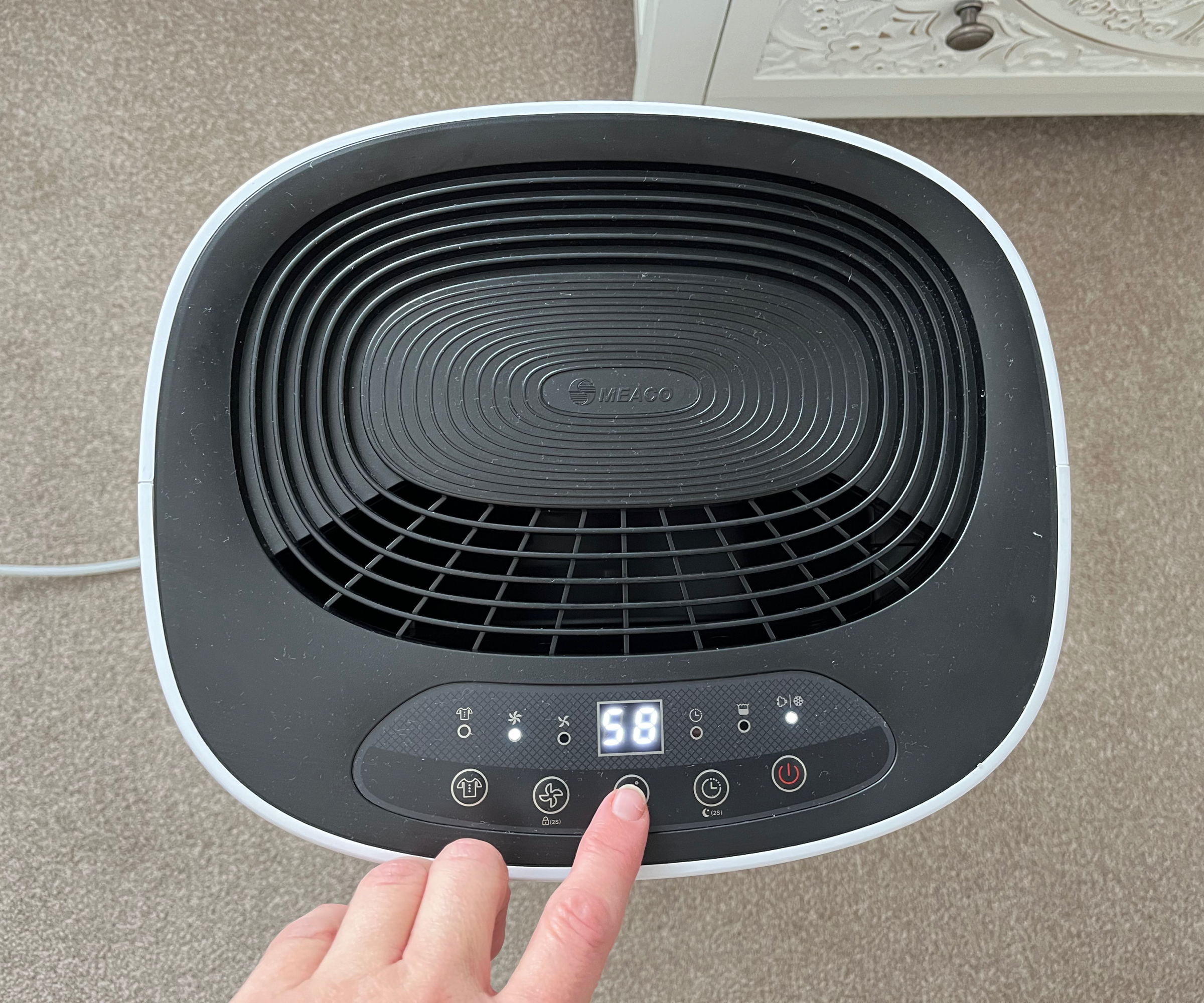
Activating the sleep mode
In order to access the sleep mode – the main reason I was looking to test this model – it's simply a case of switching it on and then holding down the timer button for 2 seconds which turns on the sleep function.
But what does the sleep mode do? It's designed to make the user experience more comfortable at night, which means it automatically removes all lights from the display, switches it into low fan mode and the unit won't beep if the water container fills up.
I also chose to use the CO humidity setting while asleep as I wanted to leave it on all night to see if I could both sleep through it, and wake up with dry windows. This means I've had it in sleep mode from around 11pm until 6.30am the following morning.
Testing other functions
And finally, although I tested the DeLonghi DEX212F 12L Tasciugo AriaDry Dehumidifier for drying laundry, I've also used the MeacoDry ABC 12L dehumidifier with my wet washing to see how the laundry mode stacked up.
Results
Over eight weeks into testing and I'm still finding the MeacoDry ABC 12 L dehumidifier a valuable tool in my battle against bedroom window condensation. It continues to perform exactly as it says it will. Each setting works correctly, and ease of use really is as 'easy as ABC'.
Did I sleep and wake to clear windows?
As a light sleeper, waking easily if disturbed, I went into testing assuming that I'd be jumping out of bed in frustration to turn off the dehumidifier. Despite having other models in the house, I've never slept with one in my room before – mainly because I'd convinced myself I couldn't.
However, I was pleasantly surprised on both the first and all subsequent nights I've used the MeacoDry ABC 12L dehumidifier, even to the extent that I feel it's possibly improved my sleep. As I live in a town centre, the night time weekend noise can be disruptive, but the dehumidifier has almost acted like a white noise machine, helping to drown out the street noise.
When I first switched it on, I was a little alarmed as it made a relatively loud humming noise, but it quickly settled. This seems to happen every time you switch it on, but it lasts only a few seconds. Then the standard dehumidifier hum kicks in.
I'll admit to lying there for a little while on the first night, wondering if it would keep me awake, but clearly not. I've also been able to go back to sleep easily if I've woken. In terms of it passing this particular test, it certainly has.
My son has also had it in his bedroom as part of the testing and again, there have been no issues with sleep and he's woken to clear windows.
Have my condensation levels improved?
As the first round of testing involved seeing how well the MeacoDry ABC 12L dehumidifier could remove a night's worth of condensation from two large sash windows with slatted shutters, it felt like it might be a big ask for a smaller model. However, it was more than up to the job. Within a couple of hours they were clear.
On those nights that the weather forecast has indicated a drop in temperature and I've used it in sleep mode, every morning I've woken to clear windows with no condensation. One night when I forgot to switch it on, it was an entirely different case and I was back to windows running with moisture. But, it's done its duty once switched on, and even with a drop in temperature has continued to remove the condensation.
Wondering if temperature affects performance? "The size of a dehumidifier primarily determines how much water it can extract, not how well it performs in cold temperatures," says Chris Michael, managing director of Meaco. "In a cold room, a larger compressor dehumidifier will outperform a smaller one thanks to its greater power. However, if the room temperature falls below 15°C, a desiccant dehumidifier is the better option."
As my home office is also in my bedroom, as previously noted, I've also used it during the day to help improve the overall humidity levels. This has had the added benefit of making the room feel warmer too – a huge bonus with single glazing one of the main reasons for heat loss in a house and the cause of my rising energy bills.
The tank hasn't been full in the morning, although has needed emptying daily. And, as with other models tested, once it's full, removing it from the unit invariably sees a small amount splashing out onto the floor from the container. Not enough to be considered a problem, but worth noting if you're using a bedroom where carpet is the most common floor covering.
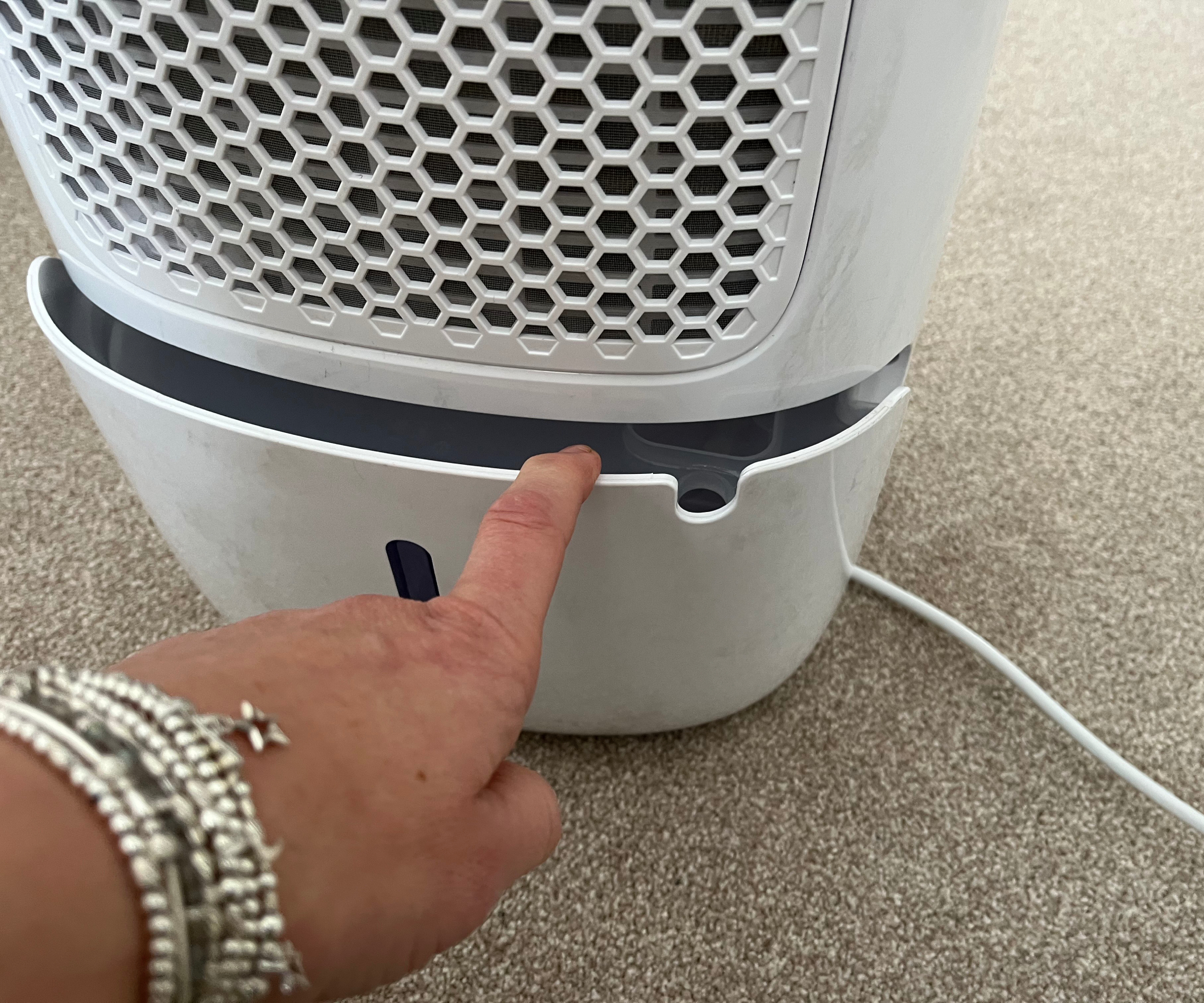
Did it work for drying laundry?
There's very little in the difference between the ability of the MeacoDry ABC 12L dehumidifier and the DeLonghi DEX212F Tascugio AiraDry model I tested when it comes to drying laundry.
However, although the water tank on the MeacoDry is larger, which means slightly less emptying, the DeLonghi dehumidifier does make the landing area where I dry my clothes warmer when the laundry setting is on, meaning it also dries the clothes a little quicker too.
Using them both to dry laundry, also led me to ask some further questions about how these two models stack up when compared at night. While I haven't tested the DeLonghi model in my room, I have been using it in my son's room at night. He's also had a lot of respiratory problems this year which is why I'm keen to eradicate the mould on window frames that has started to appear.
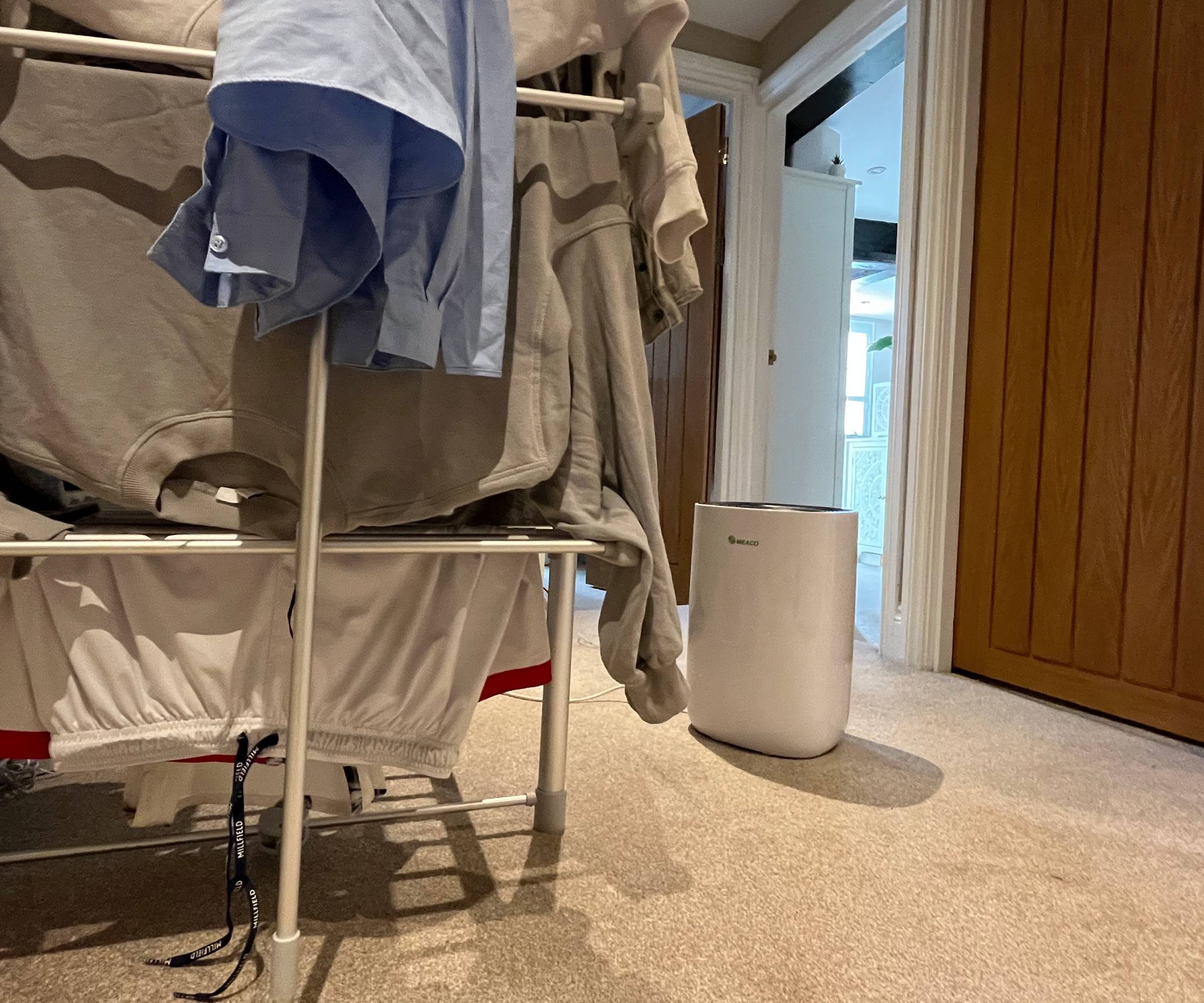
Meaco vs DeLonghi
When it comes to standard review criteria, the Delonghi DEX212F 12L Tasciugo AriaDry dehumidifier and the MeacoDry ABC 12L dehumidifier have a few similarities. Both extract up to 12L of extraction, operate as low as 36dB, have a laundry mode, varying fan speeds and auto switch off.
However, it's when it comes to use at night, or even during the day to reduce humidity, where the differences appear. While the MeacoDry can be put into continuous mode, the Delonghi model doesn't have this option. It also doesn't have a humidty reading display to let you choose your desired humidity level. Although the instructions explain how in low fan mode it's attempting to achieve 60% humidity, this means once that's achieved, it switches off until the level rises again.
What's happened with the DeLonghi model is that on several occasions, the dehumidifier has switched off during the night having achieved the desired level, and then not turned back on until it's close to morning. The result being that there is still condensation on the windows.
I suspect the shutters prevent the humidity level from rising too much in the bedroom and re-activating the dehumidifier, which is good in terms of the air in the bedroom being fresher than I thought, but less so regarding the long-term build up of condensation and mould.
The DeLonghi model also costs more to buy and run. Meaco states that the cost for the MeacoDry ABC 12L dehumidifier is 4p / hour based on 24.50p / kWh, while the DeLonghi model reviewed earlier this year came in at 8p / hour.
So, while there's little difference in noise and I could easily sleep with both, the fact the MeacoDry can be made to stay on all night would get my vote for bedrooms where condensation is an overnight issue.
Final verdict
Is the MeacoDry ABC 12L dehumidifier worthy of a place in our best dehumidifiers buying guide as the best dehumidifier for bedrooms? For me, it's a yes. It achieved full marks on all the tests I set of it. I slept, I woke to clear windows and it's relatively low cost to run – even when left on all night. And, a couple of months in and I still have no complaints.
Is it as whisper quiet as I thought it would be given the decibel level and Quiet Mark recognition? Possibly not, but given 40dB is the average sound of a refrigerator, 36dB is not far off this level. In hindsight, perhaps my expectations didn't take into account that while a refrigerator sound is muffled by cupboards and general kitchen noise, 36dB in bedroom with nothing blocking the sound is always going to seem a little louder at first.
Will it be a valuable addition to preventing mould in the bedroom during the winter? Of that I have no doubt and would have no hesitation in recommending it for helping it to reduce humidity in a house.

Sarah is Homebuilding & Renovating’s Assistant Editor and joined the team in 2024. An established homes and interiors writer, Sarah has renovated and extended a number of properties, including a listing building and renovation project that featured on Grand Designs. Although she said she would never buy a listed property again, she has recently purchased a Grade II listed apartment. As it had already been professionally renovated, she has instead set her sights on tackling some changes to improve the building’s energy efficiency, as well as adding some personal touches to the interior.
